Friday Fundamentals – Terminology
#fridayfundamentals
In reply to the Back to Basics WheelgunWednesday post, a pertinent question came up.
“I was ‘hammering’ instead of firing a ‘controlled pair.’
What do you mean by hammering?”
Great question – thanks for asking. Sometimes we trainers take our subject matter knowledge for granted. Several concepts developed by Jeff Cooper have remained constant despite having been formulated nearly half a century ago.
Fundamental Terminology
- Flash Sight Picture
- Controlled Pair
- Hammer
Flash Sight Picture
The concept of accepting that perfect sight alignment is not necessary to achieve an acceptable hit. Shooters often assume that they need to obtain a perfect sight picture for acceptable hits.
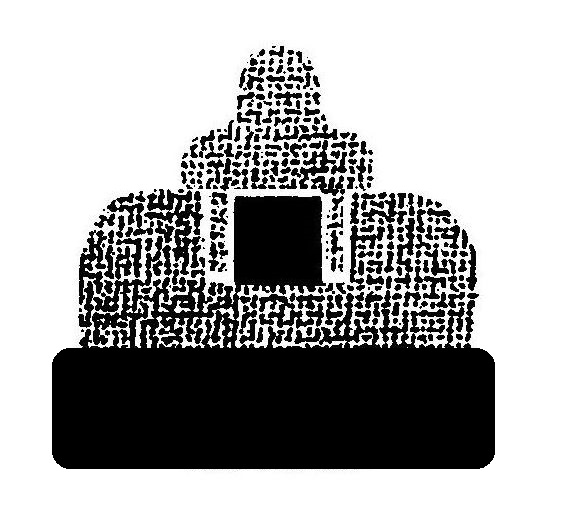
That’s not necessarily the case, depending on the distance to target.
https://thetacticalprofessor.net/2015/02/06/89081/
https://thetacticalprofessor.net/2015/10/02/friday-fundamentals-segment-2/
Controlled Pair
Achieving an acceptable sight picture on a target, firing a shot, bringing the pistol down in recoil, obtaining a second acceptable sight picture, and firing a second shot.
Hammer
Achieving an acceptable sight picture on a target, firing a shot, bringing the pistol down in recoil, and firing a second shot using only a physical index to the target without regard to achieving a second sight picture.
Note that the term ‘double tap’ is obsolete because it could refer to either a controlled pair or a hammer and so is inadequate as a description. Others have written in-depth articles about Cooper’s concepts so I will just link to them.
Flash Sight Picture
Chris Baker
Jim Wilson
https://www.americanrifleman.org/content/sheriff-s-tips-understanding-the-flash-sight-picture
Hammer v. Controlled Pair
Jim Wilson
https://www.americanrifleman.org/content/whatever-happened-to-the-double-tap
Darryl Bolke via Greg Ellifritz
Chgowiz wins a free book of mine for asking a great question.
Back to Basics WheelgunWednesday
#wheelgunwednesday
Going back to basics occasionally helps me get back in the groove. Two basic exercises I like for the snub revolver are the LAPD Retired Officer Qualification Course and the NRA Basics of Pistol Shooting Level 1 test.
The LAPD course is described in the LAPD Manual.
“The starting position for this qualifying course of fire will begin at the 7 Yard Line. When the target faces, the shooter will draw and fire 10 rounds at a single silhouette target. A score of 70 percent is required to pass the qualification. All rounds impacting anywhere on the body and head will receive full value and rounds impacting upon the arms are half value.”
Basics of Pistol Shooting Level 1 test consists of shooting five shots into a circle that is four inches in diameter at a distance of 10 feet. All five shots must hit or cut the circle. It must be done four time, not necessarily consecutively, to pass BOPS.

For both tests, I include opening and spinning the cylinder periodically to create ball and dummy practice. In the LAPD Course, I also include a few initial dry practice draws, a la the NY State CCL Qualification, staggered loading with loose rounds during the first five shots, presenting from Low Ready, firing different numbers of rounds, and a reload with a loading device for the second five.
During my initial run of LAPD (I did four), I noticed that a couple of my shots went high. Upon repeating it, I realized that I was ‘hammering’ instead of firing a ‘controlled pair.’ That was probably the reason I had a couple of high hits during the Rangemaster Pistol Match https://thetacticalprofessor.net/2024/04/10/tactical-conference-2024-pistol-match/.
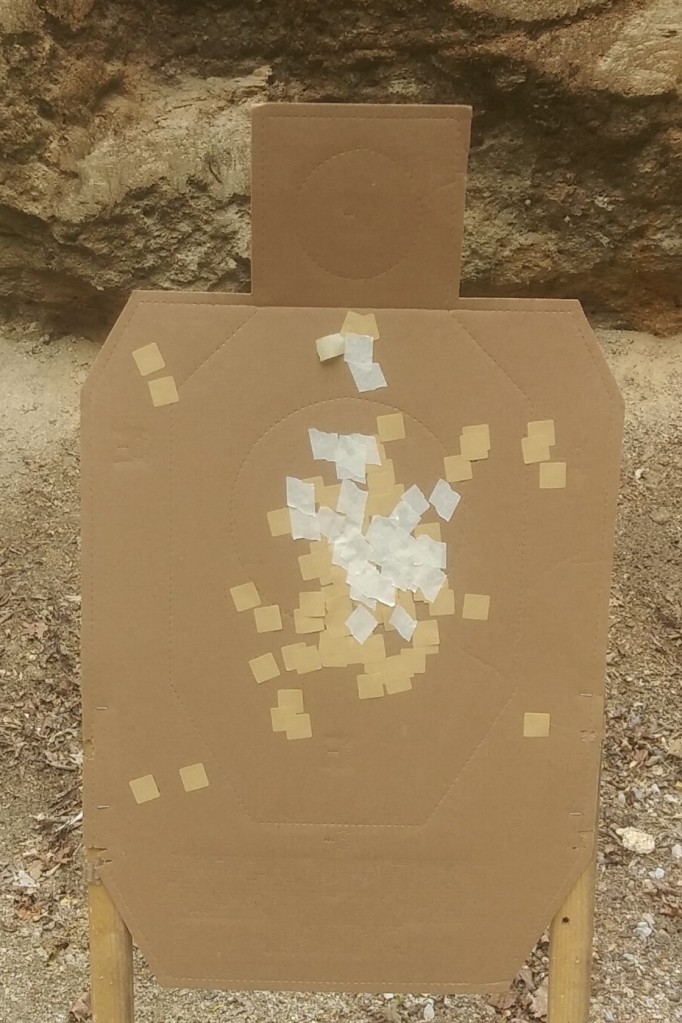
I used a target that I found on the range. The hits covered with masking tape are mine. The ones with pasters are from the previous and unknown shooter. The two hits just below the neck line were the ones probably the result of hammering.
Since BOPS has four strings, I used the opportunity to tune up with several different loading devices. One was an HKS speedloader and the others were various tools from Zeta6 that I like. All the Zeta6 devices are modified with Retention Rings. I find the Retention Ring is a handy addition for getting the device out of my pocket.
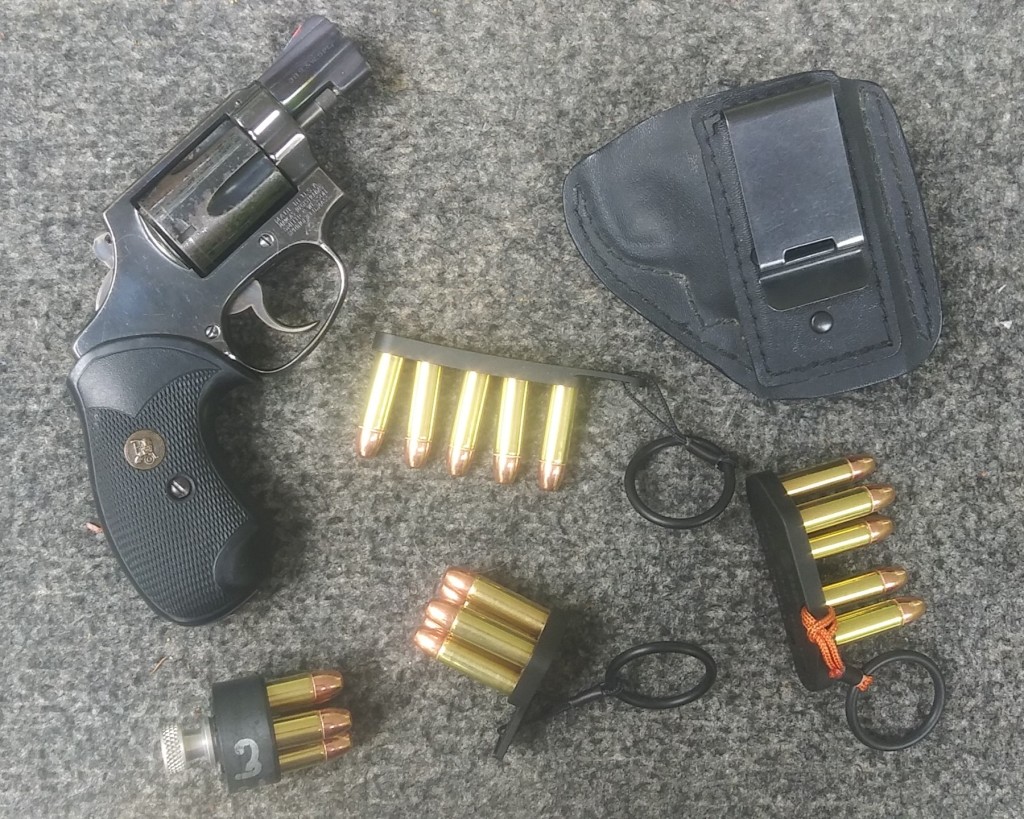
It was a nice little tuneup. The day was nice and the results were satisfying.
Home Defense Pistol Skills
My latest Shooting Illustrated article is up.
“In the process of defending one’s home with a pistol, several additional skills beyond marksmanship are useful and necessary. In particular, the ability to move through the home while holding a handgun and techniques to inform the all-important DON’T SHOOT/SHOOT decision are critical.”
https://www.shootingillustrated.com/content/home-defense-pistol-skills
Flashlight skills at home are important enough that the flashlight chapter of Indoor Range Practice Sessions is a free download on my ebook store.
https://store.payloadz.com/go/?id=2505573
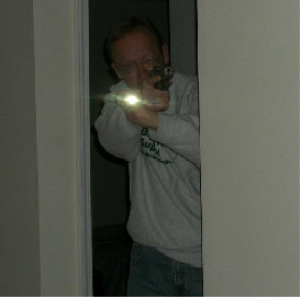
Tactical Conference 2024 Pistol Match
#wheelgunwednesday
I shot the match with my Taurus 856 snub.
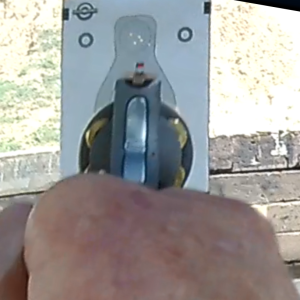
Here’s a video short of the Pistol Match https://youtube.com/shorts/uFh9EogmeAY?feature=share
Course of fire
All strings were shot at turning targets in 4 seconds.
3 yards
- 6 shots from concealed holster (6/6)
5 yards
- 5 shots from concealed holster (5/11)
- 5 shots from concealed holster (5/16)
- 4 shots Primary Hand Only from Low Ready (4/20)
- 3 shots Support Hand Only from Low Ready (3/23)
7 yards
- 4 shots from concealed holster (4/27)
- 4 shots from concealed holster(4/31)
10 yards
- 2 shots from concealed holster (2/33)
- 2 shots from concealed holster (2/35)
5 yards
- 5 timed {3.53} face shots from Low Ready (5/40) These shot were scored with Comstock scoring.
This was my final target score. I pulled a few out of the circle but none below the belt or off the silhouette.
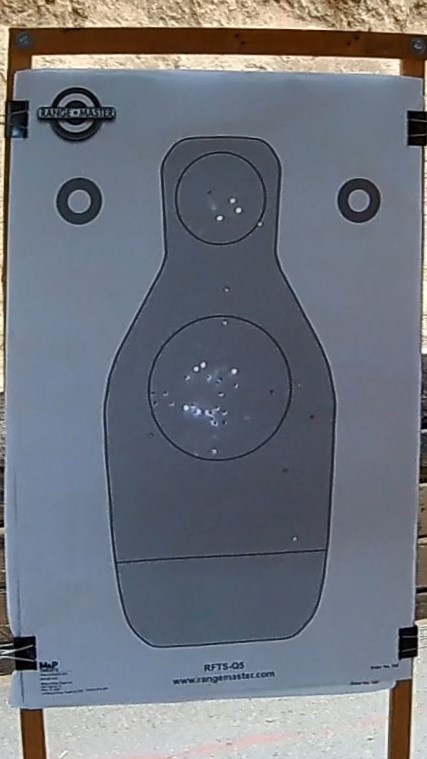
Rangemaster Tactical Conference 2024
TacCon 2024, as we call it, is now in the books. [link] It is an annual teaching and learning conference for those who are, or want to be, serious students of the Art of Self-Defense and Personal Protection. This is the fourth year it has been held at the Dallas Pistol Club, a marvelous facility.
The Conference is three days long. This year there were 42 trainers, who taught 69 different classes in 10 different ranges/classrooms. Topics ranged widely from shooting technique to unarmed combatives to medical procedures to using social media effectively and safely. Some classes are live fire, some are hands-on non-live fire, and some are lectures.
There is also a pistol match for those who choose to shoot it. The match is not mandatory and some attendees don’t shoot it. Not everyone who attends TacCon is a gun person, although most are. The Pistol Match consists of 40 rounds shot on turning silhouette targets at distances of 3 to 10 yards.
The presentation I gave was Off-Duty Shootouts of the LAPD. The basis for my presentation was the entirety of shootouts by LAPD officers, while they were off-duty, during the period 2005 to 2022, the last year full reporting has been published.

Since there are generally 10 classes going on at time, it’s impossible to attend them all. Some of the classes are repeated once or twice but the majority are not. Classes I was able to attend were:
Friday
Beware of… Well, Just Beware by Tom Givens
As my colleague Craig Douglas likes to ask “How do you do ‘Situational Awareness?’” Tom provided some answers to that question.
Civilian Defender Philosophy by Dr. Sherman House
The Art of Self-Defense and Personal Protection has many different facets, as represented by the wide variety of topics presented at TacCon. ‘The Real Dr. House’ presented his thoughts on how to prioritize and integrate them.
SATURDAY
Off-Duty Shootouts of the LAPD by Claude Werner, the Tactical Professor. To start the day off right, my presentation was one of the 8AM offerings.

Why study Off-Duty POlice Shootings? LAPD officers are encouraged to NOT take “enforcement action” while off-duty. Off-duty lethal force incidents involving LAPD officers are almost always Self-Defense/Personal Protection incidents much like those that could be encountered by Armed Private Citizens. They provide a thoroughly researched and documented database of shootings and the circumstances that led up to them.
Pistol Match
I finished about middle of the field. But since I shot a Taurus 856 snub revolver and speedloaders against a bunch of red dot equipped service sized autoloaders, I’m okay with that. POV video of the match will be up in a few days on my YouTube channel.
10 Tips for Teaching Gateway Students by Karl Rehn
It’s heartening to me to see how many high level instructors are thinking about best practices for teaching entry level gunowners and shooters. Karl’s wasn’t the only such presentation at the Conference but the only one I could attend.
During lunch, Andy Stanford from Surefire did a video interview with me about Serious Mistakes Gunowners Make and Guns That Get No Respect. When he publishes the edit, I’ll link it.
More about the Conference tomorrow
Improving Snub Sight Visibility, Again
#wheelgunwednesday
The new Lipsey’s 642 UC (Ultra Carry) is the latest hotness in the revolver community. Its single biggest feature is an upgraded set of sights on it. The sights are a worthy improvement.

Not everyone who owns one of the millions of snub revolvers out there is going to buy something new to get a better set of sights though. I’ve written previously about how to improve the sight visibility of a snub revolver. https://thetacticalprofessor.net/2019/07/10/getting-more-out-of-your-snubs-sights/
The bottom line is that if you can’t see the sights on your snub, you can’t use them.
Earlier this year, I purchased an Ameriglo tritium front sight for my Taurus 856. Although I had already painted the original front sight as outlined in the previous article, I wanted to try out the Ameriglo. Installing it was not difficult, only requiring a 1/16th inch pin punch. Some kind of bench block is helpful. The process is easier if the cylinder is removed so the gun lies flatter on the bench.
A word of warning; the screw that holds the yoke on the Taurus is not one piece assembly like a Smith & Wesson. There’s a small plunger and spring that fits inside the Taurus screw and is a separate assembly. It will come out when the screw is removed. Watch for it and don’t lose it, the screw will not hold the yoke in if the plunger assembly is lost.
The rear of the Ameriglo sight overhangs the barrel a bit and at first I thought that was a design flaw. Then I realized it’s actually very clever. The overhanging lip ensures that the hole for the roll pin holding the sight in place is always in the same spot. It works very well, the pin was easy to reinsert. A replacement pin is included with the sight but I reused the original.
When I took it to the range, I had an issue. While the sight is highly visible, bringing the whole orange area into the rear notch when sighting makes the gun shoot high. This is a common problem when folks paint the entire ramp of a revolver. The natural tendency is to bring the entire colored area visible in the rear notch. Inevitably, this means the top of the front sight is above the top of the rear notch and the gun will shoot high. As long as you’re just trying to hit the 8 ring of a B-27 at 3 yards, this doesn’t matter. However, if you’re trying to put a bullet in the face of the target at 5 yards or more, it becomes very problematic.

I had to consciously bring the top of the sight down into the notch for every shot. This reduced how much the high visibility of the sight contributed to my shooting. I was still able to make my par times but I was working at it.

To remedy this, I painted the lower part of the sight with white Appliance enamel. Fortunately, it was obvious that the tritium dot established the part needing white paint. I’m not concerned about the night sight, so I just painted over it. Masking the area I didn’t want paint on gave a good final result. The original sight with its paint is on the right.

When working on a snub’s sights, putting a large binder clip on the front of the frame will stabilize the revolver and position it properly so you can do your artistry. Put some tape or cloth around the frame if you are concerned about scratching it. Note also that the rear notch is blackened with an Ultra Fine Point Sharpie.

The system that inspired this method of painting sights is the Optical Landing System used by pilots landing on aircraft carriers. They learn to use the visual reference very quickly while landing and with some practice, using the sight paint on the front sight to achieve a good sight alignment becomes second nature too.

If I see the white, I know the sight is too high. If I don’t see the orange, I know to bring the front sight up. After doing it for a while, this becomes as instinctive as driving between the lines on the road, unless you drive a Honda Odyssey, in which case the lines probably aren’t important to you. 😊
I’ll find out how well this works at the 2024 Tactical Conference when I shoot the pistol match.
My ebooks about shooting and personal protection are available on Payloadz. https://store.payloadz.com/results/337896-tactical-professor

McGee’s Paradigm

“Three shots in three seconds at three yards.” That was Lt. Frank McGee’s iconic summation (McGee’s Paradigm) of the typical gunfight of New York City police officers in the 1970s. Lt. McGee was the head of the NYPD Firearms and Tactics Section at that time. His analysis came from the Department’s SOP-9 report, which began compiling statistics about the gunfights of its officers in 1969. Although the scope and name of the report has evolved over time, it is still published by the NYPD and available online. McGee’s Paradigm hasn’t changed much over the past 50 years.
Since most gunowners are limited to shooting at indoor ranges, learning to shoot against a time standard has always been an issue. Shot timers usually work by tracking the noise from each shot and are therefore not always useful in the indoor-range environment because of adjacent shooters. Besides this, casual shooters are generally unwilling to spend over $100 for a shot timer.
The widespread nature of smartphones and Bluetooth earbuds have given us a solution to this problem. There are several timing apps for Smartphones available online. Used in conjunction with Bluetooth earbuds underneath earmuff-based hearing protection, practicing marksmanship with a par time is now easily accomplished.
https://www.shootingillustrated.com/content/three-shots-in-three-seconds
A demonstration video is available at https://youtu.be/8kL0bUQWsfI
Here’s a target for the final 20 rounds of the 50 round session.
Keep Your Hand Away From the Muzzle
A friend of mine sent this link to me today.
Instagram video of Serious Mistake followed by Negative Outcome. https://www.instagram.com/reel/C4LsHBArwtl
In the video, the person holding the gun is trying to get the laser to come on and repeatedly muzzles his own hand looking for the laser dot. Shortly after this frame, the gun discharges and shoots a hole in his hand, which was a definite Negative Outcome.

Sadly, the examples of dangerous gunhandling that gunowners and new shooters see while watching TV and movies are horrific. In the latest debacle by the ATF’s “expert” on the talking head TV show Face The Nation, he muzzles his own hand repeatedly. https://www.cbsnews.com/video/atf-director-and-firearms-expert-show-some-of-the-weapons-being-found-on-the-streets/

The ‘unboxing’ shows on YouTube by so-called wannabe gun ‘influencers’ are universally heinous, too. And before we get to feeling all righteous and self-congratulatory, even people we in the industry would consider legitimate Subject Matter Experts muzzle their own hands regularly when doing demonstrations on YouTube.
Probably the best firearm safety device that could be produced would be an extremely sharp Fairbairn Sykes British Commando Dagger with a 3 inch long 9mm diameter tang and no handle. If any knife producer wants to use this idea, feel free, no license or royalty required.

The 9mm tang could then be inserted all the way into the muzzle of a pistol so the dagger blade would be directly in front of the muzzle. It would teach the importance of keeping one’s hand away from the muzzle. In an emergency, it could also serve as a bayonet. 😊
Keep your hand away from the muzzle, PERIOD. It doesn’t matter if you think the gun is unloaded, keep your hand away from the muzzle. Rule 1: “All guns are always loaded” is a philosophical rule unlike Rules 2 through 4, which are operational rules. Not many people really understand this distinction.
SixFerShur 2nd Day
The first day of SixFerShur sold out faster than I expected. My host, The Complete Combatant, has kindly offered to host a second class on the following Sunday. If you weren’t able to register for Saturday, now you still have a chance to learn how to spin your wheels.
Sunday, May 5, Dahlonega, Georgia – Home Range of The Complete Combatant
https://www.shootingclasses.com/thecompletecombatant/course/?courseId=4493
One Day – $199 plus $20 Range fee
Important: Although a few exercises will be shot with small (J Frame ish) revolvers, this is NOT a J Frame course. You will need a full size (K frame or equivalent) revolver to attend. Shooting 300 rounds in a day through an Airweight J Frame only teaches one thing; how to flinch.
I was asked if a Ruger SP101 would be workable for the course. My answer is:
“If you can shoot 300 rounds through it in a day without developing a flinch, that’s the object of the exercise.”
Please be sure you can do that. What I want to avoid is teaching someone how to massively flinch.
https://www.shootingclasses.com/thecompletecombatant/course/?courseId=4493
SixFerShur
I will be conducting the 2024 Revolver Operator Course this May in North Georgia.

May 4, Dahlonega, Georgia – Home Range of The Complete Combatant
One Day – $199 plus $20 Range fee
Important: Although a few exercises will be shot with small (J Frame ish) revolvers, this is NOT a J Frame course. You will need a full size (K frame or equivalent) revolver to attend. Shooting 300 rounds in a day through an Airweight J Frame only teaches one thing; how to flinch.
https://www.shootingclasses.com/thecompletecombatant/course/?courseId=4493
The Pence Drill is one of the two keystone drills of the Revolver Operator Course.
Fair attribution: I liberated the SixFerShur title from Tamara Keel’s blog post because it’s hilarious.
https://booksbikesboomsticks.blogspot.com/2024/03/narrow-focus-cartridge.html
That’s probably what I’ll call the class from now on because “Revolver Operator Course” sounds so mundane by comparison.
You must be logged in to post a comment.